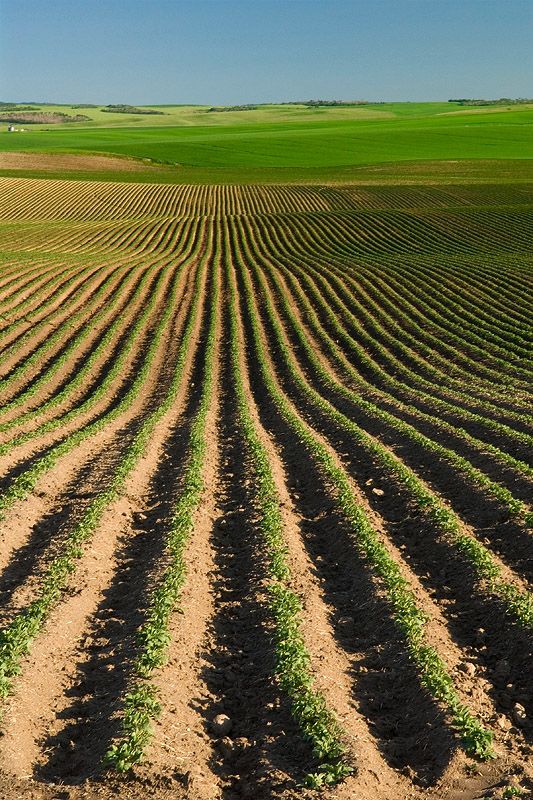Mastering the Harvest: How Agricultural Data Management Fuels Smart Farming
Agricultural Data Management sector is undergoing a significant transformation, driven by technological advancements and a growing need for efficiency and sustainability. Smart agriculture, a broad term encompassing the use of technology to optimize farming practices, is rapidly evolving. At the heart of this transformation lies a crucial element: agricultural data management.
In the past, agricultural decisions were primarily based on experience and intuition. Today, smart farming technologies generate a wealth of data, including:
- Soil conditions: Sensors monitor moisture levels, nutrient content, and soil temperature, providing insights into ideal planting conditions and fertilizer application.
- Weather data: Real-time and historical weather data allows farmers to predict weather patterns and adjust irrigation practices or plan for potential risks like frost or heat waves.
- Crop health: Drones equipped with multispectral imaging can detect early signs of disease or nutrient deficiencies, allowing for targeted interventions.
- Yield data: Combine harvesters equipped with yield monitors provide valuable insights into crop performance across different field sections, informing future planting decisions.
This data, when properly managed, becomes the fuel that powers smart farming.
Contents
The Power of Data: Benefits of Agricultural Data Management
Effective agricultural data management offers a multitude of benefits for farmers, including:
- Improved decision-making: Data analysis provides a deeper understanding of farm operations, allowing for informed decisions on planting, irrigation, fertilization, and pest control.
- Increased efficiency: By optimizing resource utilization, such as water and fertilizer application, farmers can reduce waste and maximize productivity.
- Enhanced yields: Precise monitoring and data-driven decisions can lead to improved crop health, resulting in higher yields.
- Reduced environmental impact: Data analysis can help farmers minimize water usage, optimize fertilizer application, and promote sustainable practices.
- Improved risk management: By analyzing historical data and weather patterns, farmers can better anticipate potential risks and take preventive measures.
- Traceability and market access: Data management systems can help track food production from farm to fork, meeting consumer demand for transparency and traceability, potentially opening access to premium markets.
Harnessing the Data: Tools and Technologies Agricultural Data Management
Several tools and technologies are available to facilitate agricultural data management:
- Farm Management Software (FMS): These cloud-based platforms provide a centralized repository for various agricultural data points. Farmers can access, analyze, and visualize data to gain valuable insights.
- Sensors and Monitoring Systems: Sensors deployed throughout the farm collect real-time data on soil conditions, weather patterns, and crop health. This data is then transmitted wirelessly to the FMS for analysis.
- Data Analytics Tools: Advanced software programs can analyze large datasets, identify trends, and generate actionable insights for farmers.
- Internet of Things (IoT) Platforms: IoT networks connect various farm equipment and sensors, allowing for seamless data collection and transmission.
Challenges and Considerations Agricultural Data Management
While the benefits of agricultural data management are undeniable, there are challenges to consider:
- Data security: As farms collect more data, ensuring its security and privacy becomes paramount. Implementing robust cybersecurity measures is crucial.
- Interoperability: Different farm equipment and sensors may use incompatible data formats. Standardization is vital for seamless data integration and analysis.
- Technical knowledge: Utilizing data effectively requires a certain level of technical knowledge. Training and support are essential to equip farmers with data management skills.
- Cost: Implementing data management solutions can involve upfront costs for hardware, software, and technical expertise.
The Road Ahead: A Data-Driven Future for Agriculture
Agricultural data management is not just a trend; it’s the cornerstone of a future-proof farming strategy. By embracing data-driven insights, farmers can navigate the challenges of climate change, resource scarcity, and a growing global population.
Here are some key steps to ensure success in your data management journey:
- Identify data needs: Determine the specific types of data most relevant to your farming operations and goals.
- Invest in the right tools: Choose farm management software and sensor systems that are user-friendly and integrate seamlessly with your existing infrastructure.
- Develop data literacy: Equip yourself and your staff with the knowledge and skills necessary to collect, analyze, and utilize data effectively.
- Seek expert advice: Consult with agriculture data specialists who can guide you in optimizing your data management strategy.
By embracing a data-driven approach, farmers can unlock new levels of efficiency, sustainability, and profitability, paving the way for a more prosperous and resilient agricultural future. As the world grapples with the challenges of feeding a growing population with limited resources, agricultural data management will be the key to unlocking a new era of abundance and sustainability in the agricultural sector.




